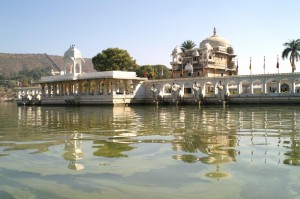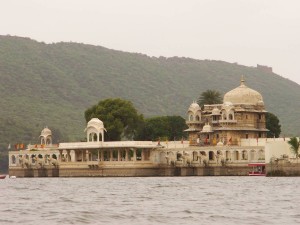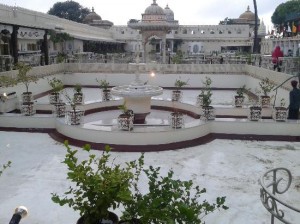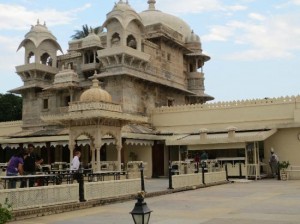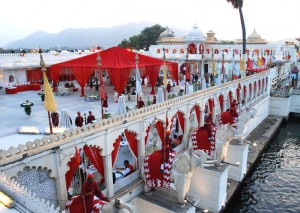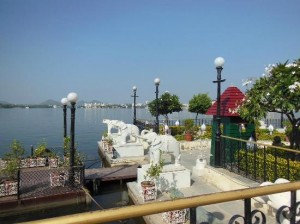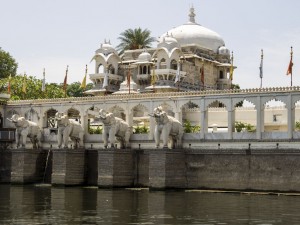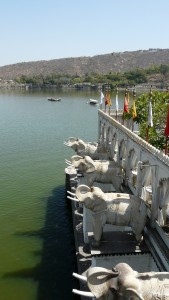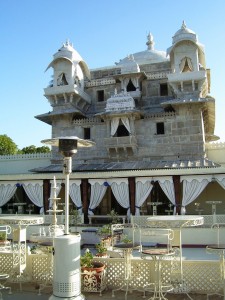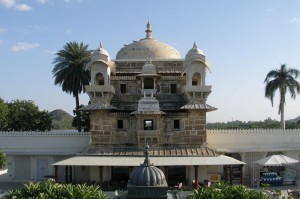Written by Soudip
June 16th 2014Other Places
You Are Here
Home > India > Shaniwar Wada, Pune Historical Facts and PicturesJag Mandir Historical Facts and Pictures
Jag Mandir palace is located in Udaipur in the Indian state of Rajasthan. Situated on an island in the Lake Pichola, it is also referred to as the “Lake Garden Palace”. The palace was built by the Maharanas of the Sisodia Rajput clan of Mewar and was primarily used by them as a summer resort and as a pleasure palace for holding parties and entertaining their guests. The construction of the palace was started in 1551 by Maharana Amar Singh; it was continued by Maharana Karan Singh (1620-1628) and finally completed during the reign of Maharana Jagat Singh (1628-1652).
The palace gained its popularity since it was used as a hideout by Prince Khurram, the estranged son of Emperor Jahangir – a relentless foe of the Maharana. The reason for the aid was that Shah Jahan (Prince Khurram) had a Rajput mother. It is believed that Shah Jahan derived some of his ideas for Taj Mahal during his stay here in 1623-24. The origins of the palace name is widely speculated, as many believe that since it was Maharana Jagat Singh that oversaw the final stages of construction the palace was named in his honor. One the other hand, many historians believe that since the palace has a temple dedicated to Lord Jagdish, it was named as Jag Mandir.
Jag Mandir is a three storied palace structure set up in a garden courtyard. The towers of the palace are octagonal in shape and adorned with cupolas. It consists of several reception halls and residential suites all built in Mughal-Rajputana styles. Adjoining the palace lies the Zenana (residence of royal ladies chamber) and on its west end lies the Kunwar Pada Ka Mahal (The Palace of the Crown Prince). The Eastern wing of the palace contains the Bara Patharon Ka Mahal (Palace of Twelve Stones) so named because of the twelve solid marble slabs used in its construction. The main Jag Mandir palace also incorporates the Gul Mahal which was the first structure built and was resided by Prince Shah Jahan. The Gul Mahal, with its three circular chambers and a large imposing dome, also has two ornate marble chatris with sloping cornices adorning the main façade. The entry pavilion to the palace is rather impressive and is decorated with large elephants carved out in stone, four on each side of the entry steps. The Darikhana is situated in the northern side of the palace and is an open sided terrace consisting of several magnificent marble columns.
Jag Mandir
Jag Mandir Inside
Carved Statues of Elephants
Gul Mahal
The Jag Mandir Palace, approachable only by a boat from the Bansi Ghat jetty, now houses a well stocked museum and also serves as a heritage hotel.
Category
IndiaWritten by Soudip
June 16th 2014











